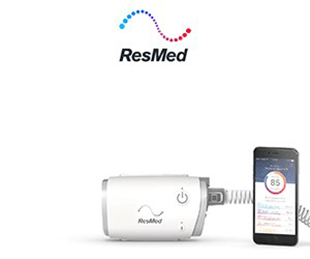People are living longer and demographics are shifting rapidly, with older consumers switching on to digital. However, being internet-savvy doesn’t mean they are fully confident around social media. Marketers should be aware of the rising ‘silver surfer’ age group, says Phil Aiston, but understand their online behaviour and adjust accordingly when it comes to social marketing.
The notion that marketing to older consumers, those over the age of 65, is best done via offline media is rapidly becoming outdated. Ever greater numbers of ‘silver surfers’ are using the internet to conduct research, connect with friends and family, bank and shop. For brands looking to effectively target this newly digitally-savvy demographic, it’s time to develop an understanding of how the online behaviour of the over-65s differs from other age groups.
The rise of the ‘silver surfer’
Last year, Colliers International found that British seniors are among the most tech-savvy consumers in the world, with 78 per cent of internet users over 65 now shopping online, while Ofcom has reported that four in ten internet users over 75 now have a social media profile or account.
This new data upends the previously commonly-held belief of marketers that older people only use the internet to do research, read the news and, with the help of a younger person, Skype distant relatives. There’s clearly a trend towards over-65s using the internet for much the same reasons as their younger counterparts. As well as social networking, the latest internet usage data from the ONS shows that they’re increasingly banking (26%), uploading content to share (20%) and watching TV (18%) online.
The travel sector in particular faces huge opportunities. 31% of internet users over 65 use online services related to travel and accommodation, while Experian reports that this age group spends £1.3bn more annually on travel than they did ten years ago. With new social advertising tools optimised for the travel sector (such as Dynamic Product Feeds), campaigns targeted at this demographic could be incredibly effective.
But there are important caveats to this overarching trend, which suggest that treating older consumers just like young and middle-aged internet users would be a mistake for social media marketers.
Those who are online are lacking confidence
While the proportion of digitally experienced seniors has been rising fast, participation is far from total. The same ONS report found that 40% of people aged 65 and over haven’t used the internet in the last 3 months, compared to only 4% of people between 16 and 64. The Centre for Ageing Better has commissioned research into the reasons behind this later-life digital divide.
While a large section of the demographic aren’t online at all, those who do use the internet are, in general, neither confident nor particularly savvy. The Ofcom report found that a fifth of people over 65 describe themselves as ‘not confident’ online. One reason could be that many older users are new to the internet: some 21% of internet users over the age of 75 went online for the first time in the last five years.
Older consumers also have trouble recognising the different techniques employed by marketers. Only 46% of over-65s felt able to identify sponsored links in search engines, while only three in ten over-75s were aware of personalised advertising.
Crucially, almost one in five internet users over 65 say they are ‘not at all confident’ about managing their personal data.
Multiple touchpoints, softer CTAs, great UX
Given the lack of confidence among over-65s around personal data and payments, it’s probably not a good idea to target these consumers with social media advertising campaigns where a direct response or purchase conversion is the main objective.
Because this demographic is more likely than the average internet user to read articles and web pages in full, social media advertising is much better deployed strategically to facilitate the discovery/education phase of the purchase cycle. Softer CTAs, such as ‘learn more’, which lead to long form content explaining product or service features in more detail are more likely to move older consumers towards conversion.
The final conversion may well happen offline or via a proxy – a significant number of older users will use a family member to help facilitate online purchases. It’s worth bearing this in mind when setting campaign KPIs. Metrics related to engagement could be more revealing about the success of the campaign than straight-up conversion rates.
Social advertising should be complemented with other channels to create more touchpoints and a rounder customer journey. One of the most cited reasons for the over-65s going online is to check email, so make use of email marketing in combination with social advertising by creating custom audiences.
UX is a very important part of ensuring your social advertising is effective. If an older user clicks on an ad only to be faced with a complex and confusing landing page, then you’re pouring your media budget down the drain. Plan your landing pages to meet the lowest common denominator of browsing ability: use large fonts, clear buttons, clear navigation and minimise the number of clicks required to purchase.
How ResMed increased sales to over-55s with ‘Learn more’
We recently executed a campaign for a client which produces and sells at-home healthcare devices across Europe. We used a combination of video case studies, Facebook carousel ads and Google Display Network banners to drive people to ResMed’s landing page. The page was designed with an older audience in mind, helping them learn more about product features and lifestyle benefits.
 As part of this campaign we split test CTAs (calls to action) on Facebook carousel ads, and discovered that ‘Learn more’ produced a far higher CTR (click-through rate) than ‘Shop now’, demonstrating that the over-55 audience is less responsive to a direct ask on social media.
As part of this campaign we split test CTAs (calls to action) on Facebook carousel ads, and discovered that ‘Learn more’ produced a far higher CTR (click-through rate) than ‘Shop now’, demonstrating that the over-55 audience is less responsive to a direct ask on social media.
ResMed reported that they saw web traffic volumes three times higher than they had forecast, devices selling at twice the forecast speed and dwell times up by more than 25%. They can also attribute a significant increase in their patient database to the success of the social media campaign.
Remember, the soft ask is more effective with older consumers
While the proportion of older consumers getting online is rising all the time, these users are often far less confident than their younger counterparts when it comes to making purchases and sharing their personal data. Over-65s, in general, are much less likely to respond to direct asks on social media, so campaigns should proffer a softer CTA, which leads to content that answers the consumers’ questions and allays their concerns, and a journey that is designed to be as easy as possible for older users to complete.
Have an opinion on this article? Please join in the discussion: the GMA is a community of data driven marketers and YOUR opinion counts.
Read also:
What retail start-ups can teach classic direct sellers about social shopping and over-55s
The baby boomer and beyond – a manifesto








Leave your thoughts